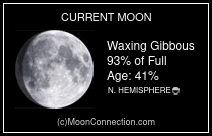
Brigid’s Cross Wreath Workshop
Imbolc (Imbolg) is a Gaelic festival marking the start of spring (also the feast day of Saint Brigid, Ireland's patroness saint).
It falls about halfway between the winter solstice and the spring equinox and is one of the four Gaelic seasonal festivals. Imbolc is mentioned in early Irish literature, and historians agree that it has pre-Christian origins. Some scholars argue that the date of Imbolc was significant in Ireland since the Neolithic as a few passage tombs in Ireland are aligned with the sunrise around the times of Imbolc, like the the Mound of the Hostages on the Hill of Tara.
Imbolc is associated with lambing season, the coming of spring, and the goddess Brigid. (Saint) Brigid is said to have lived in the 6th century and founded the monastery of Kildare. However, there are few historical facts about her, most being stories rooted in Irish Pagan folklore.
It is suggested that Saint Brigid is based on the goddess Brigid, who is associated with wisdom, poetry, healing, protection, blacksmithing, and domesticated animals. It may have also been a purification festival, similar to the ancient Roman festival Februa, which took place at the same time of year. Not much is written on how Imbolc was celebrated in ancient times, but through oral tradition, we have a few ideas. Brigid's crosses are woven and hung over doors and windows to protect against fire, illness, and evil. People also make Brigid dolls (a Brídeóg), visit holy wells, and have special meals.
Brigid is said to visit one's home and to receive her blessings, people make a bed, leave food and drink, and set items of clothing outside for her to bless. Parades and events with music, poetry, lantern processions, fire performers, fireworks, and plays are put on throughout Ireland and England. Imbolc festivals are observed by some Neopagans, some attempt to closely emulate the historic accounts, while others rely on many sources to inspire their celebrations.
Festivals typically fall near February 1st, but some celebrate at the astronomical midpoint between the winter solstice and spring equinox (usually the 3rd or 4th) and others celebrate on the nearest full moon. Similarly, Celtic Reconstructionists usually celebrate the festival at the start of spring, or on the nearest full moon. Although they prefer to use traditional songs and rites from sources like The Silver Bough and The Carmina Gadelica.










